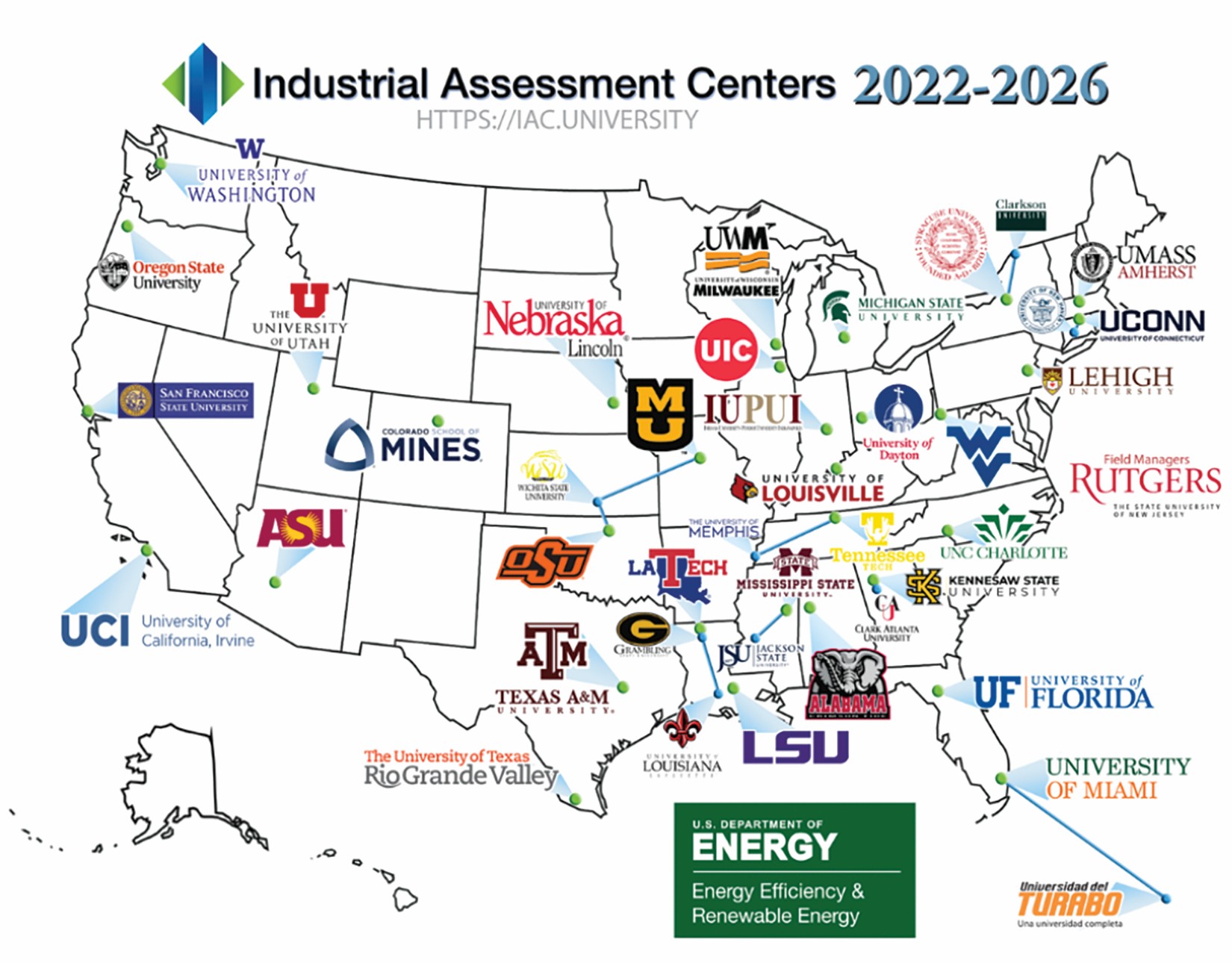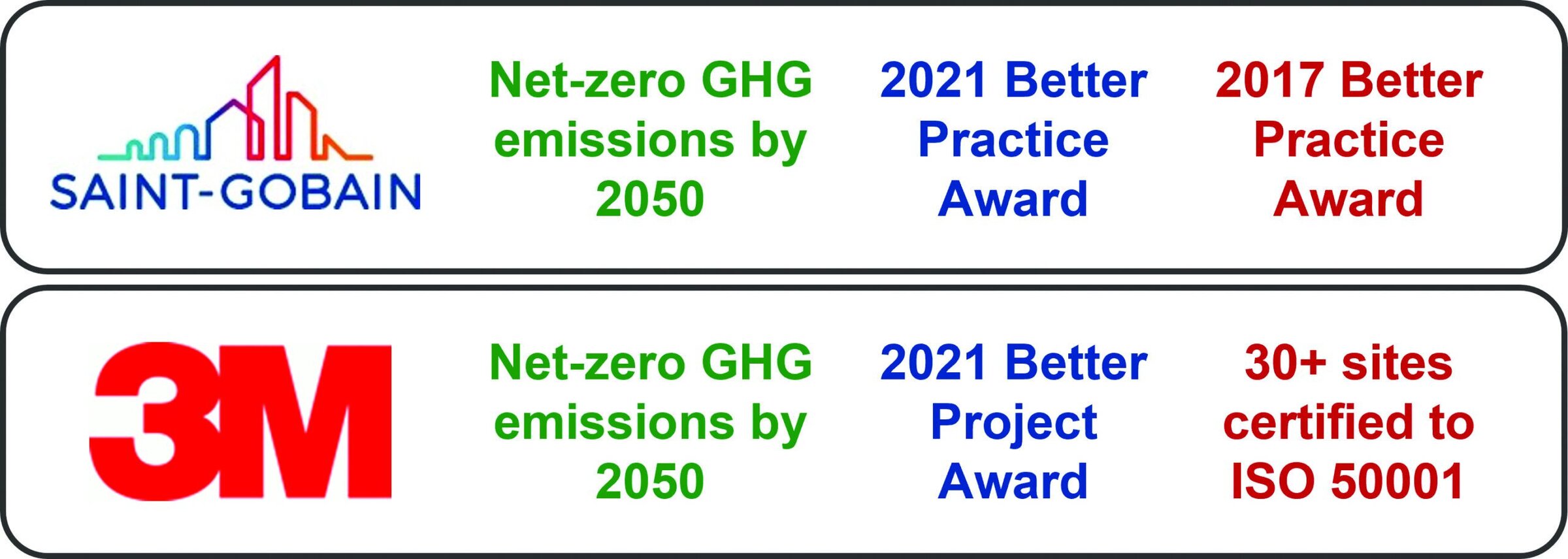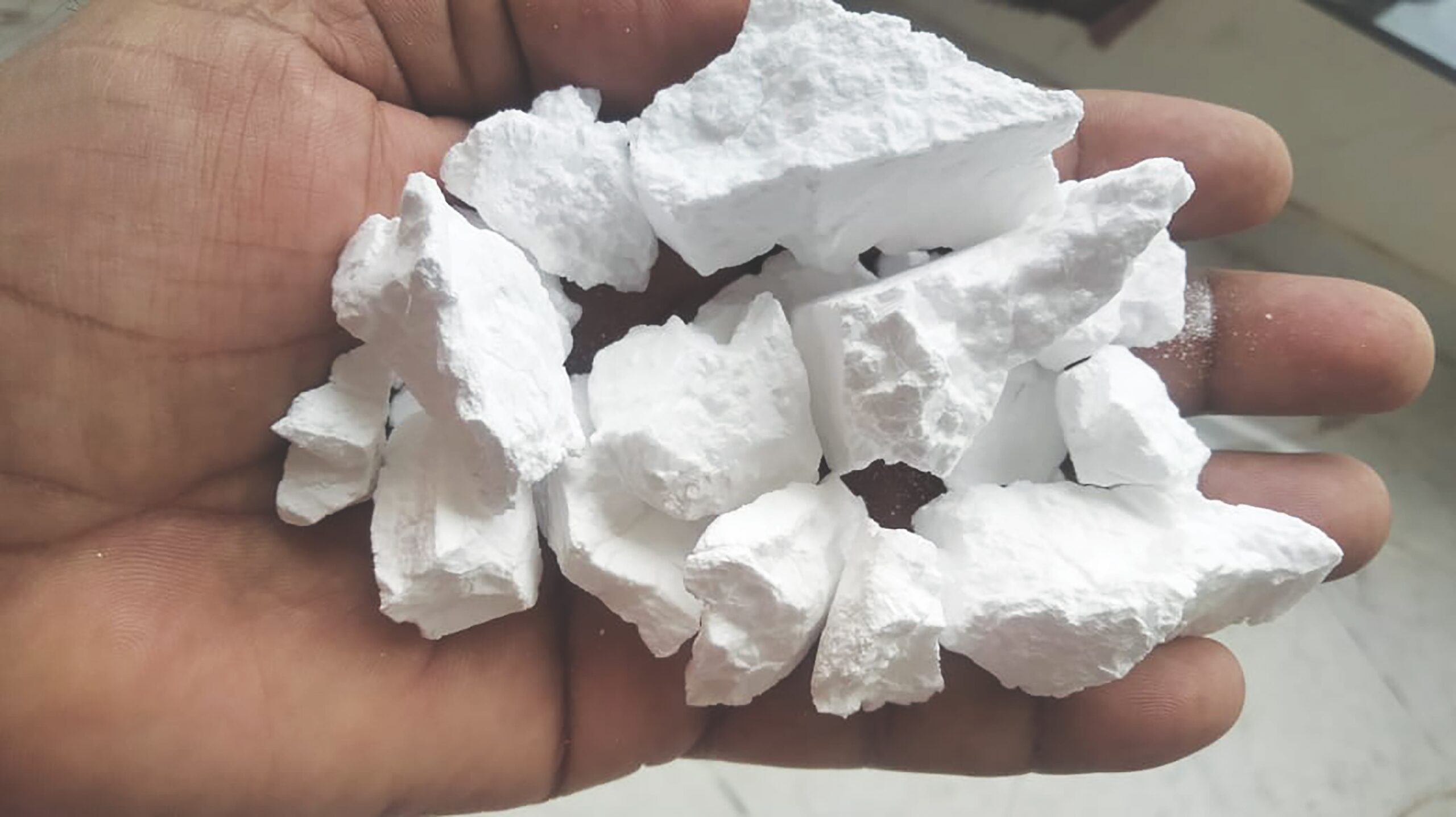The U.S. Department of Energy (DOE) recognizes that an efficient and robust domestic manufacturing sector is essential for creating high-paying American jobs and ensuring a prosperous economy.
To that end, DOE’s Advanced Manufacturing Office (AMO) is committed to fostering a strong, diverse base of American manufacturers that lead the world in sustainability and innovation.
To support U.S. industry, AMO invests in research, development, demonstration, and deployment for technologies that catalyze innovation, improve energy performance, lower emissions, and reduce the cost of new materials and processes in manufacturing. Glass and ceramics are critical to this mission, from providing materials relied on by a wide range of industries to supporting U.S. technological leadership in manufacturing the components required for a clean energy economy, including solar cells, fuel cells, and thermoelectric generators.
No-cost programs and resources available to manufacturers
AMO offers a range of technical assistance and workforce development resources that can support glass and ceramics manufacturers today. Together, they aim to provide manufacturers with advanced technical support and expertise, energy management assistance, and access to open-source tools and software to identify and implement energy- and emissions-saving opportunities (Figure 1).

Figure 1. Overview of DOE’s programs and resources that support manufacturers in improving energy performance and reducing GHG emissions. Credit: DOE AMO
Better Plants Program
AMO’s Better Plants Program is a voluntary initiative that encourages U.S. manufacturing companies to set aggressive energy efficiency and sustainability goals. In return, partners receive advanced technical assistance and trainings, opportunities for networking and peer-to-peer knowledge sharing, and national recognition for their achievements.
As of fall 2021, Better Plants’ more than 250 partners had cumulatively saved over $9.3 billion in energy costs since 2009 at over 3,500 nationwide facilities, representing 13.8% of the U.S. manufacturing energy footprint.1 When joining Better Plants, partners commit to reducing their portfolio-wide energy intensity by approximately 25% over 10 years. Partners also have the option to join at the Challenge level, which involves making an additional commitment to share energy efficiency and decarbonization strategies, data, and solutions with other industrial companies to facilitate economy-wide emissions reductions. DOE works closely with partners to support them in achieving their goals.
To learn more about Better Plants and/or become a partner, visit https://betterbuildingssolutioncenter.energy.gov/better-plants/join or email BetterPlants@ee.doe.gov.
Advanced technical assistance
Better Plants partners are provided with robust technical assistance through a dedicated technical account manager (TAM). TAMs work closely with partners to develop energy management plans and goals, which includes establishing energy baselines, developing energy management plans, identifying energy-saving and energy-recovery opportunities, and tracking energy performance metrics.
TAMs are also subject-matter experts in a range of relevant technology focus areas, including building envelope and modeling, combined heat and power, heat waste management, compressed air, fans, lighting, motors, process cooling and HVAC, process heating, pumps, refrigeration, steam, water, renewables, microgrids, diagnostic equipment, energy-systems software, smart manufacturing, techno-economic analysis, life cycle assessment analysis, economic feasibility analyses, and carbon reduction targets.
Visit https://betterbuildingssolutioncenter.energy.gov/better-plants/technology-focus-areas to learn more about TAMs.
In-plant trainings
Better Plants offers expert-led multiday workshops that train participants to identify, implement, and replicate energy efficiency projects. In response to the COVID-19 pandemic, the Better Plants team pivoted to offer virtual in-plant trainings that focus on a range of energy-saving topics, including energy management (50001 Ready), steam systems, fan systems, pumping systems, process heating, ammonia refrigeration, water efficiency, and wastewater treatments. Together, these virtual workshops have trained over 600 employees of partner companies, helping to identify over $2 million in energy efficiency opportunities.
Industry networking
Better Plants regularly offers a variety of opportunities for partners to engage with one another and other industry experts. These opportunities include the Better Buildings, Better Plants Summit; industrial sector meetups; and interactive workshops and discussion sessions.
Learn more about the Better Buildings, Better Plants Summit at https://betterbuildingssolutioncenter.energy.gov/summit.
Peer-to-peer knowledge sharing and recognition
Better Plants features partner achievements in DOE materials and publications and at events and site visits. Case studies illustrating how partners met their goals are broadcasted on the Better Plants Solution Center, which is viewed by thousands of organizations and media outlets each year. The Better Plants team highlights successful strategies from goal achievers through resource documents and guides to best practices. Annual awards highlight innovative accomplishments in energy management and project implementation.
To explore the Better Plants Solution Center, visit https://betterbuildingssolutioncenter.energy.gov/better-plants/solutions.
Better Climate Challenge
Better Plants is also actively recruiting for the Better Climate Challenge, where organizations partner with DOE to reduce portfolio-wide greenhouse gas emissions by at least 50% within 10 years, with energy-intensive industries (as defined by the U.S. Energy Information Administration) committing to a 25% in reduction. In return, DOE provides technical assistance, opportunities for peer-to-peer exchange and knowledge sharing, and national recognition for achievements.
To learn more about the Better Climate Challenge and/or become a partner, visit https://betterbuildingssolutioncenter.energy.gov/better-climate-challenge.
Industrial Assessment Centers
DOE’s 32 Industrial Assessment Centers are an excellent resource for small- and medium-size manufacturers that are looking to improve their energy use, reduce costs, and/or take the first step toward reducing emissions.
IACs are comprised of university-based engineering students and faculty that perform no-cost energy assessments and make energy-saving recommendations at industrial facilities (Figure 2).

Figure 2. Map of DOE’s Industrial Assessment Centers. Credit: DOE AMO
IAC energy assessments include a remote survey of the plant, followed by a 1–2 day site visit where the IAC team takes engineering measurements. Following the site evaluation, the team prepares a confidential report for the plant that details the analysis, findings, and recommendations. Several months after the recommendations are made, the IAC team checks in with the plant to determine which recommendations were implemented.
To date, IACs have conducted over 19,500 assessments, making more than 148,000 recommendations with average annual savings of $137,594.2 All IAC assessments, recommendations, and implemented rates are tracked in a publicly available IAC Database (https://iac.university/#database), which also serves as an informative resource for companies seeking ideas for energy-saving opportunities.
IACs train the next generation of the energy engineering and energy management workforce, with over 60% of IAC student participants pursuing careers in the energy field following graduation. IACs also conduct research, offer training webinars focused on various energy management topics, and publish papers and case studies highlighting notable recommendations and implementation strategies.
To learn more about IACs and apply for an assessment, visit https://iac.university.
Energy management assistance
DOE understands the critical role that energy performance management can play in saving energy, reducing costs, and increasing competitiveness.3 To that end, DOE’s 50001 Ready and Superior Energy Performance 50001 (SEP 50001) programs support and recognize facilities and organizations that attest to implementing energy management systems aligned with the International Organization for Standardization (ISO) 50001. ISO 50001 is the global standard for energy management systems, providing organizations with a framework and specific requirements for system implementation.
50001 Ready
The 50001 Ready program offers a no-cost, audit-free alternative recognition program for organizations that implement an energy management system in accordance with the principles of the ISO 50001 standard. A central tool for the program is the 50001 Ready Navigator, which is a “Turbo Tax-like tool” that provides partners with step-by-step guidance to carry out the 25 tasks required to implement an ISO 50001-based energy management system.
To date, DOE has recognized 77 organizations for completion of the 50001 Ready program. The program now also includes virtual cohorts that receive 6–12 months of ISO 50001 expert support in the form of training webinars, virtual coaching sessions, and tailored guidance.
Learn more about the 50001 Ready at https://betterbuildingssolutioncenter.energy.gov/iso-50001/50001Ready. Check out the 50001 Ready Navigator at https://navigator.lbl.gov.
Superior Energy Performance 50001
The Superior Energy Performance 50001 program provides elevated levels of recognition (at the Silver, Gold, or Platinum level) to facilities that implement the ISO 50001 standard and demonstrate improved energy performance. Achievements are verified by an independent third party.
Learn more about the Superior Energy Performance 50001 program at https://betterbuildingssolutioncenter.energy.gov/iso-50001/sep-50001.
DOE is actively recruiting for its 50001 Ready Cohorts program, which provides tailored technical assistance to groups of energy team members of U.S.-based industrial, commercial, or institutional sites as they implement as ISO 50001-based energy management system. To learn more and apply, email 50001Ready@lbl.gov.
Combined heat and power deployment
DOE offers a comprehensive deployment support for combined heat and power (CHP), which is an efficient technology that generates on-site electric power and thermal energy from a single fuel source, achieving overall efficiencies of up to 75%.4
A central pillar of the CHP deployment program is the CHP Technical Assistance Partnerships (TAPs), 10 regional centers that provide unbiased, fact-based engineering support and technical assistance to industrial and commercial facilities that could benefit from deploying CHP, microgrids, and/or district energy technologies. CHP TAPs help identify opportunities for plants, support project planning, and conduct economic payback analyses.
The CHP deployment program also offers various no-cost resources, including a comprehensive CHP Project Profiles Database and a CHP eCatalog that facilitates side-by-side comparisons of packaged CHP systems.
For more information and assistance, contact the CHP TAP in your area: https://betterbuildingssolutioncenter.energy.gov/chp/chp-taps.
No-cost software and tools
AMO provides support for a range of no-cost software and tools that are designed to help manufacturers and water treatment plants improve energy efficiency and advance decarbonization efforts.
MEASUR Software Suite
Manufacturing Energy Assessment Software for Utility Reduction (MEASUR) is a suite of open-source software tools that allow partners to model facility data, evaluate energy use, and improve energy efficiency of industrial systems.
Learn more at https://www.energy.gov/eere/amo/measur.
REopt Lite Tool
The Renewable Energy Integration & Optimization (REopt) Lite web-based tool allows users to conduct feasibility and resiliency analyses for solar, wind, combined heat and power, and battery storage potential.
Learn more at https://reopt.nrel.gov/tool.
Financing Navigator
DOE’s Financing Navigator allows companies to evaluate a broad range of financing options for energy efficiency and renewable energy projects. The tool also facilitates user connections with the Financial Ally community, which is comprised of banks and lenders that are actively seeking energy efficiency and renewable energy projects to finance.
Learn more at https://betterbuildingssolutioncenter.energy.gov/financing-navigator.
Low carbon tools and calculators
DOE also has developed low carbon tools and calculators, including a Low Carbon Action Plan Tool that helps partners develop pathways for decarbonization of selected plants, a Carbon Inventory Calculator that helps companies track carbon emissions, and the Electrification Impact Calculator that can be used to evaluate the cost and emissions reduction associated with replacing fuel-based equipment with electrical equipment.
To learn more about AMO’s no-cost software tools, visit https://betterbuildingssolutioncenter.energy.gov/better-plants/software-tools. Open-source software can be downloaded at the AMO Github page: https://ornl-amo.github.io. If you are interested in a demonstration or training, contact us at BetterPlants@ee.doe.gov.
Use cases
AMO welcomes additional ceramics and glass manufacturers to partner with us and leverage DOE tools and resources. The successes of ACerS members illustrated below demonstrate the benefits of these partnerships (Figure 3).

Figure 3. Sustainability goals, recognition, and achievements of ACerS Corporate and Better Plants Partners Saint-Gobain and 3M. Credit: DOE AMO
Saint-Gobain
Saint-Gobain, an ACerS Diamond Corporate Partner and Better Plants Partner, is a multinational corporation that designs, manufactures, and distributes materials and solutions for buildings, transportation, infrastructure, and industrial applications.
Saint-Gobain has set ambitious energy efficiency and emissions reduction goals for their industrial sites, including a 20% reduction in energy intensity by 2026, a 33% reduction in Scope 1&2 emissions by 2030, and net-zero greenhouse gas emissions by 2050.
As a Better Plants partner, DOE supports Saint-Gobain’s sustainability goals by providing technical expertise and recognition while sharing best practices. Saint-Gobain was recently awarded the Better Plants’ 2021 Better Practice Award for the development of their “Green Awards” program, which recognizes employee researchers for R&D projects focused on various sustainability issues, including emissions reductions, energy savings, waste reduction, reduction of raw materials, and improvements in worker safety. Saint-Gobain was also awarded the 2017 Better Practice Award for their company’s Water, Waste, and Energy (WWE) Program, which inspired competition among Saint-Gobain’s 130+ manufacturing sites to improve sustainability practices while highlighting solutions and recognizing top-performing locations.
Saint-Gobain takes advantage of a range of resources available to Better Plants partners. For example, the Field Validation and Diagnostic Equipment Program provided a loaned flow meter and expert technical support from DOE’s National Laboratories that uncovered as much as $20,000 in potential energy savings. Saint-Gobain is currently participating in Better Plants’ Low Carbon Pilot, which aims to showcase real-world pathways of how industrial facilities have achieved substantial emissions reductions. Additionally, Saint-Gobain employees regularly attend the Better Buildings, Better Plants Summit; virtual in-plant trainings; and Better Plants’ Technology Days, which allows partners to tour DOE’s National Labs.
3M
ACerS Corporate Partner, Better Plants Partner, and Better Climate Challenge Participant 3M is a multinational Fortune 100 manufacturer that produces a broad range of products including abrasives, tapes, personal protective equipment, filtration material, films, medical devices, and many more.
As a Better Plants Goal Achiever, 3M successfully met its initial goal to achieve a 25% reduction in energy intensity of 111 facilities by 2016. 3M is now focusing on a new set of ambitious goals, including a 25% reduction in energy intensity from a 2015 baseline by 2025, a 50% reduction in Scope 1&2 emissions by 2030, and carbon neutrality by 2050.
To help meet its sustainability goals, 3M has adopted an enterprise-wide approach to implement an ISO 50001-based energy management system, with 30 facilities certified to ISO 50001 and 13 also holding DOE’s Superior Energy Performance (SEP) certification. In just 3 years, 3M’s 30 certified sites improved their energy performance by 4.5%, collectively decreasing emissions by 330,000 CO2-equivalent tons and decreasing energy costs by $13.5 million. AMO’s Technical Partnerships team supported this effort by organizing expert-led in-house trainings on DOE’s 50001 Ready Program and the 50001 Ready Navigator tool.
3M was recently awarded the Better Plants’ 2021 Better Project Award for implementing a battery-less, real-time, cloud-based stream trap monitoring system that substantially reduced the amount of natural gas and water required to generate steam, saving $32,000 annually in energy costs. In addition, 3M is currently participating in the Better Plants’ Low Carbon Pilot and regularly attends DOE’s virtual in-plant trainings.
Looking forward
AMO is committed to supporting a clean and competitive U.S. manufacturing enterprise into the future and is actively advancing initiatives in the following areas:
Validation of innovative technology
DOE is providing verification, validation, and deployment support for emerging technologies with significant energy and carbon-saving potential. Interested technology vendors and/or industrial sites are encouraged to apply for the Industrial Technology Validation pilot at https://betterbuildingssolutioncenter.energy.gov/better-plants/industrial-technology-validation-pilot.
Education and workforce development
AMO is ramping up efforts to strengthen the manufacturing workforce by providing diverse resources to students and professionals. Explore DOE’s workforce development resources by visiting: https://betterbuildingssolutioncenter.energy.gov/workforce.
Focus on energy-intensive industries
AMO is increasingly focused on developing resources and providing technical assistance that supports energy efficiency improvements and emissions reductions in energy-intensive industries.
AMO welcomes feedback on challenges and opportunities in ceramics and glass manufacturing. A forthcoming webinar with ACerS will cover current technical assistance opportunities and future engagement.
If you are interested in connecting with us, please reach out to Christina Walrond at christina.walrond@ee.doe.gov.
Cite this article
“How DOE’s no-cost technical assistance resources support today’s glass and ceramics manufacturers,” Am. Ceram. Soc. Bull. 2022, 101(1):34–38.
Issue
Category
- Manufacturing
Article References
1U.S. Department of Energy, “Better Plants 2021 Progress Update” (2021). https://betterbuildingssolutioncenter.energy.gov/sites/default/files/attachments/2021_Better_Plants_Progress_Update.pdf
2Advanced Manufacturing Office Industrial Assessment Center Newsletter Winter 2021 (2021). https://www.energy.gov/sites/default/files/2021-07/IAC%20Winter%202021%20Newsletter_7.6.2021_FINAL.pdf
3U.S. Department of Energy, Energy Efficiency & Renewable Energy, “ISO 50001 boosts U.S. productivity, economy, competitiveness” (2017). https://betterbuildingssolutioncenter.energy.gov/iso-50001/business-case
4U.S. Department of Energy and U.S. Environmental Protection Agency, “Combined heat and power: A clean energy solution” (2012). https://betterbuildingssolutioncenter.energy.gov/sites/default/files/attachments/chp_clean_energy_solution_0.pdf
Related Articles
Bulletin Features
Sintered synthetic cristobalite: Innovative kiln-based thermal transformation of quartz
Cristobalite, a high-temperature polymorph of silica, is widely used in ceramics, glass, paints, refractories, and dental materials due to its low density, high whiteness, thermal expansion behavior, and mechanical stability. Traditional cristobalite production methods rely on static sintering of finely ground quartz at high temperatures (~1,750°C) for extended durations (2–3…
Market Insights
Bioactive glass continues to transform medical care decades after first hitting the market
Almost 60 years ago, a chance meeting led to pioneering work that has improved medical care and seeded future innovations. In the late 1960s, a young professor named Larry Hench traveled to a conference in Sagamore, N.Y., where he happened to sit next to a U.S. Army colonel who was…
Market Insights
Sustainable development and design: Inspiration from landscape-shaping creatures
Animals are not just passive inhabitants of their environment. Many are architects of the natural world, actively shaping landforms and water bodies as they move around, feed, build homes, and reproduce. This impact by animals on different biomes has traditionally been overlooked in the environmental sciences. But scientists and engineers…




